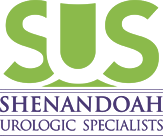Pelvic pain in women refers to pain in the lowest part of your abdomen and pelvis. Chronic pelvic pain is pain in your pelvic region — the area below your bellybutton and between your hips — that lasts six months or longer.
Determining the cause of pelvic pain can be challenging. Chronic pelvic pain can be a symptom of another disease, or it can be a condition in its own right. The experts at SUS have a variety of testing methodologies to help them make their diagnosis
Symptoms of Pelvic Pain Syndrome
- Severe and steady pain
- Pain that comes and goes (intermittent)
- Dull aching
- Sharp pains or cramping
- Pressure or heaviness deep within your pelvis
- Pain during intercourse
- Pain while having a bowel movement or urinating
- Pain when you sit for long periods of time






